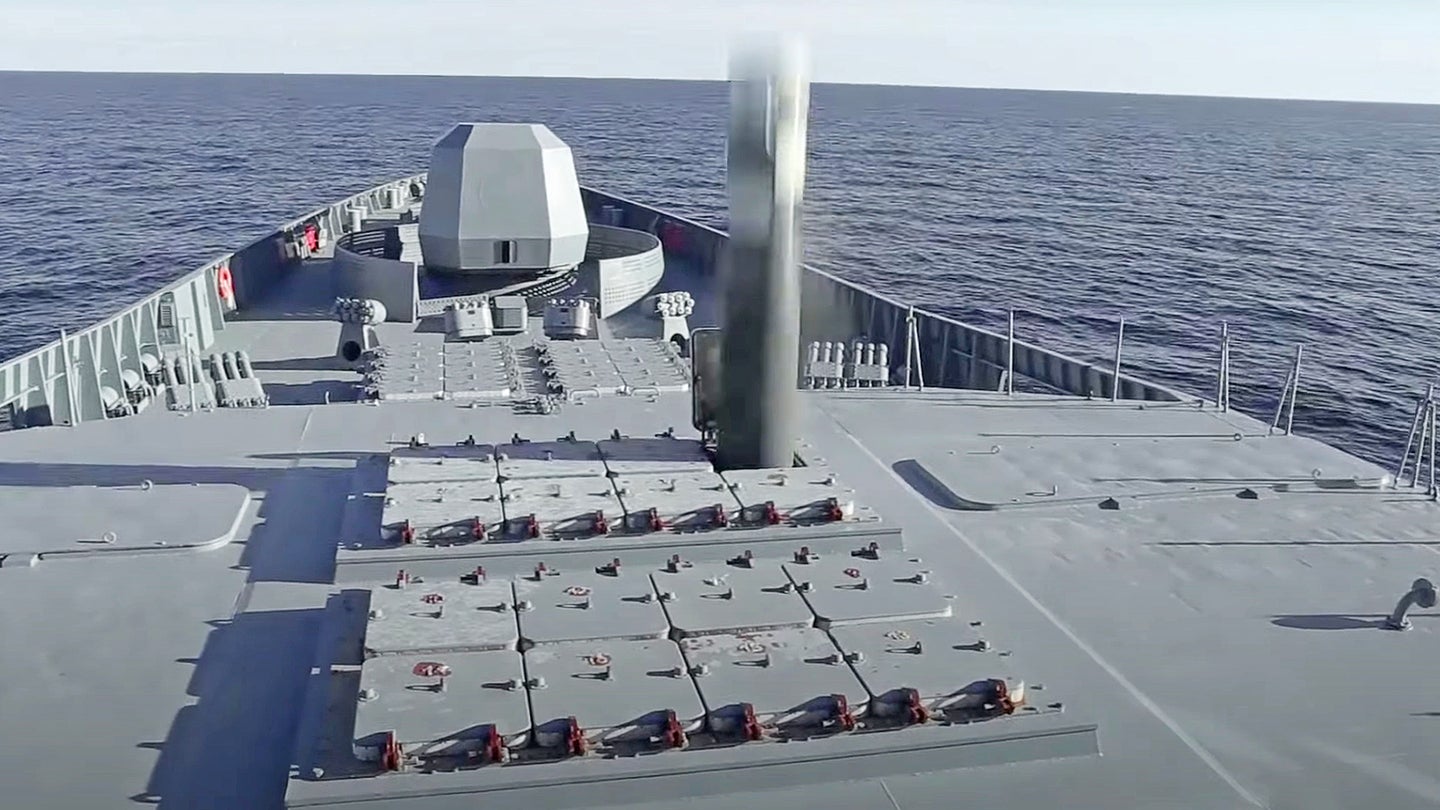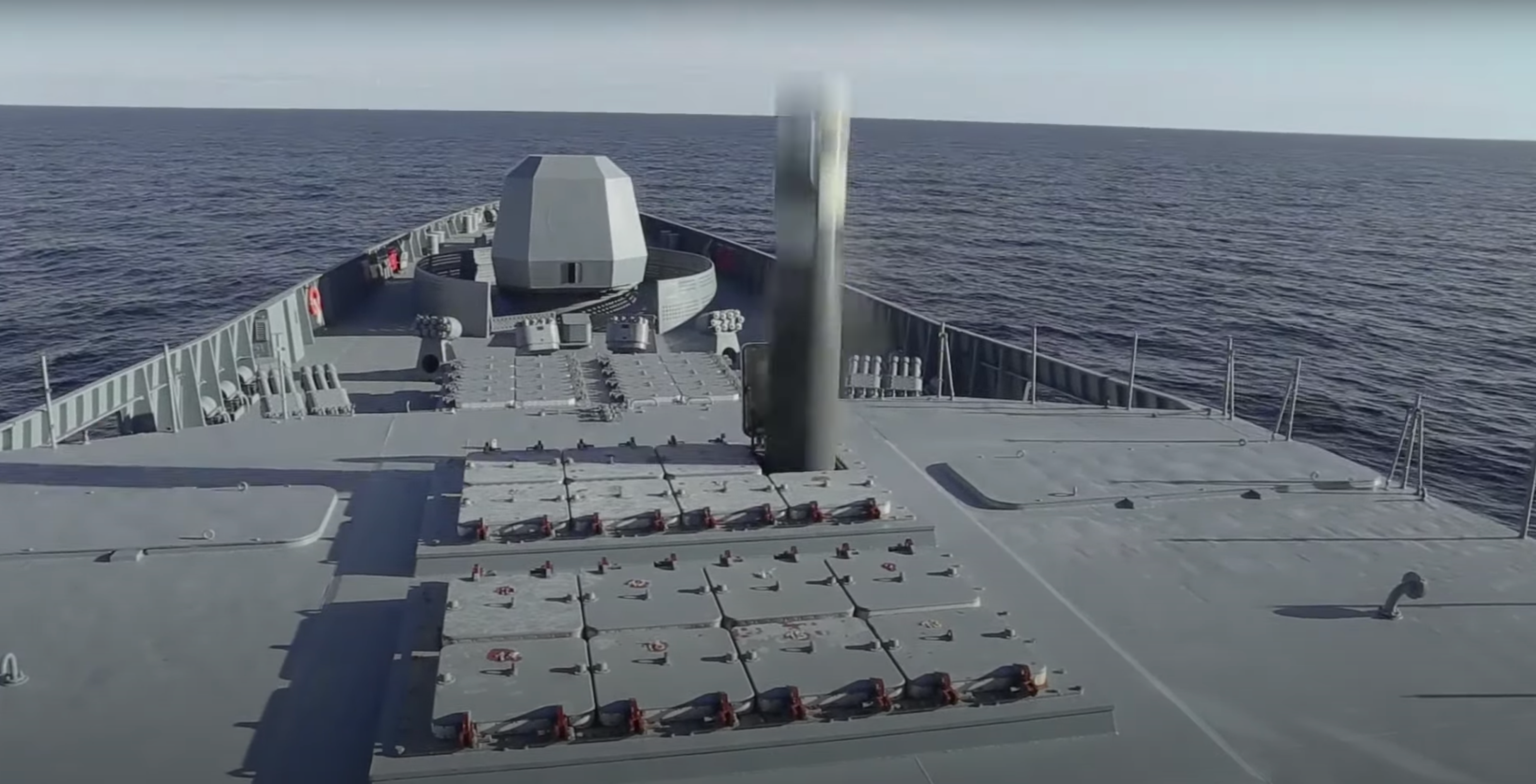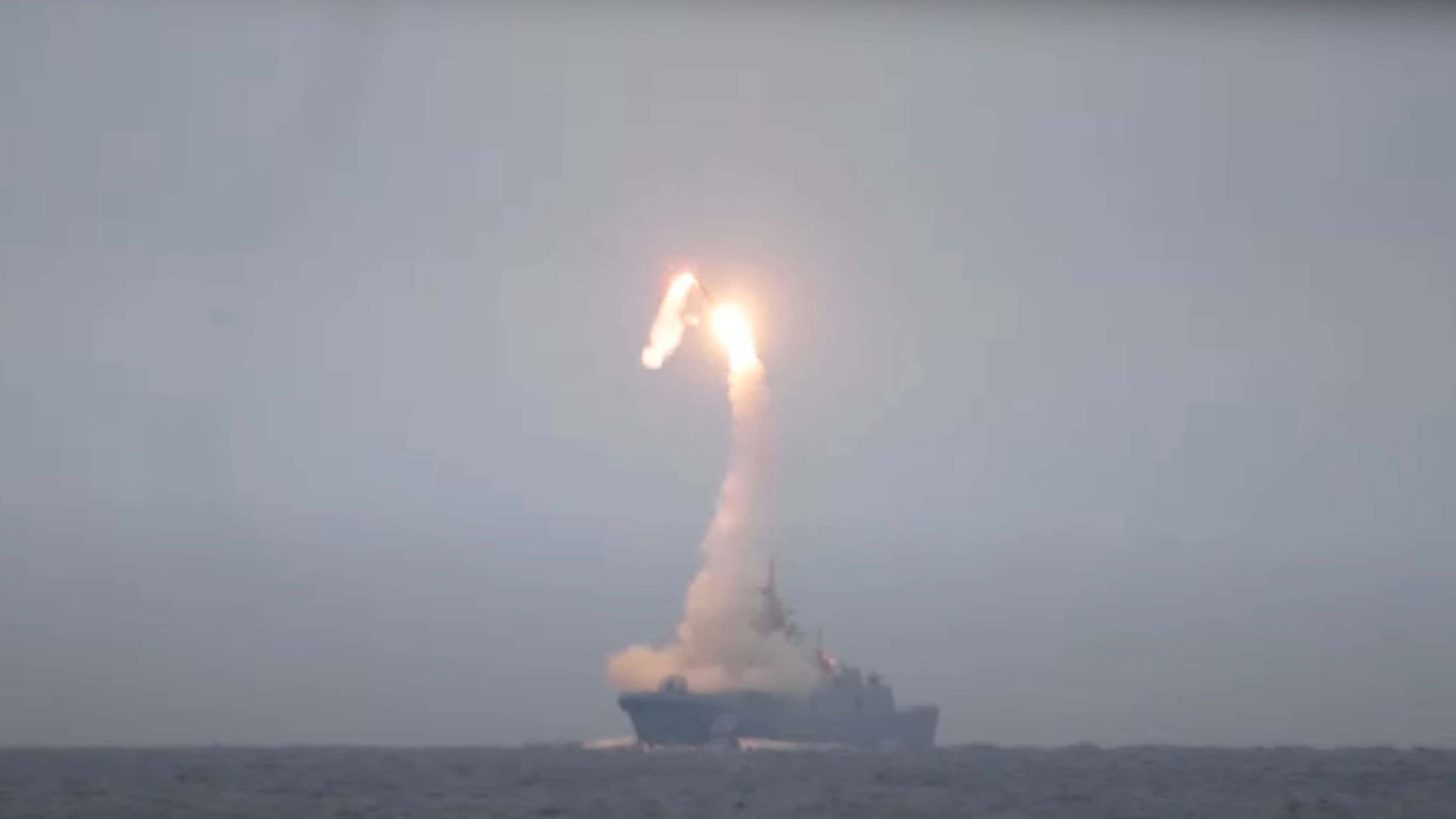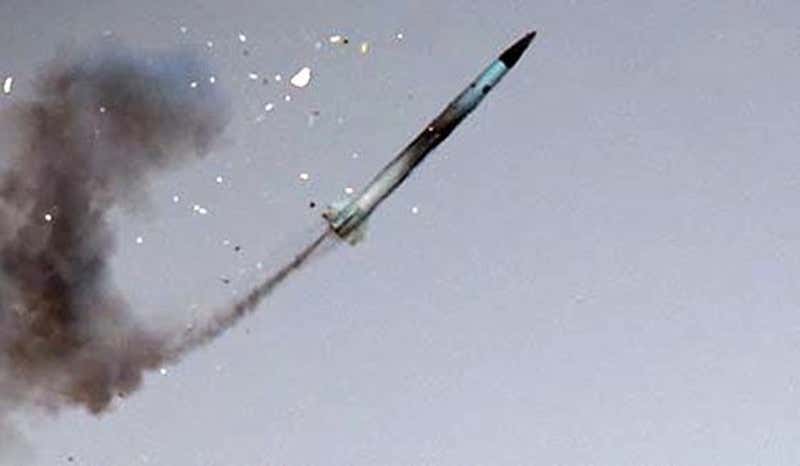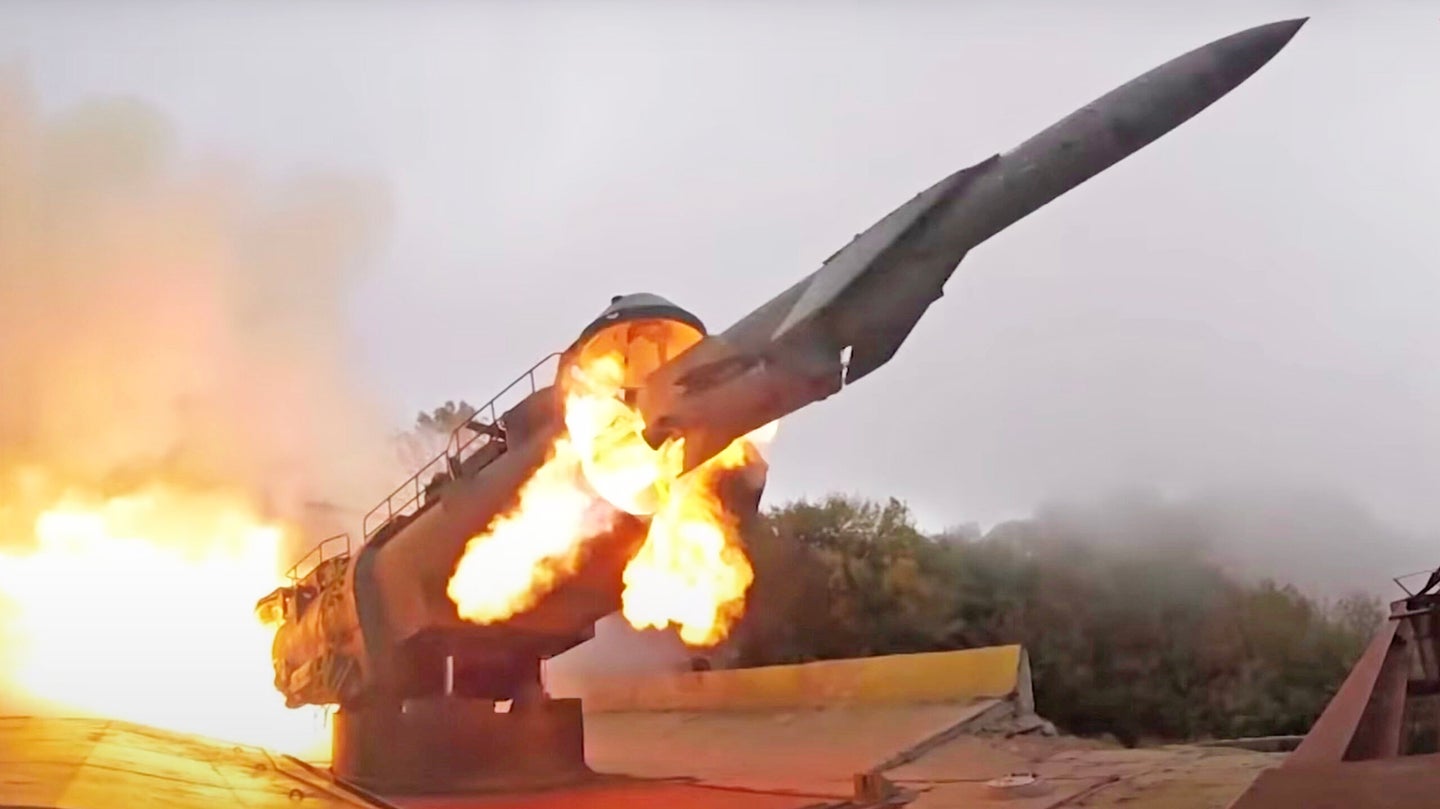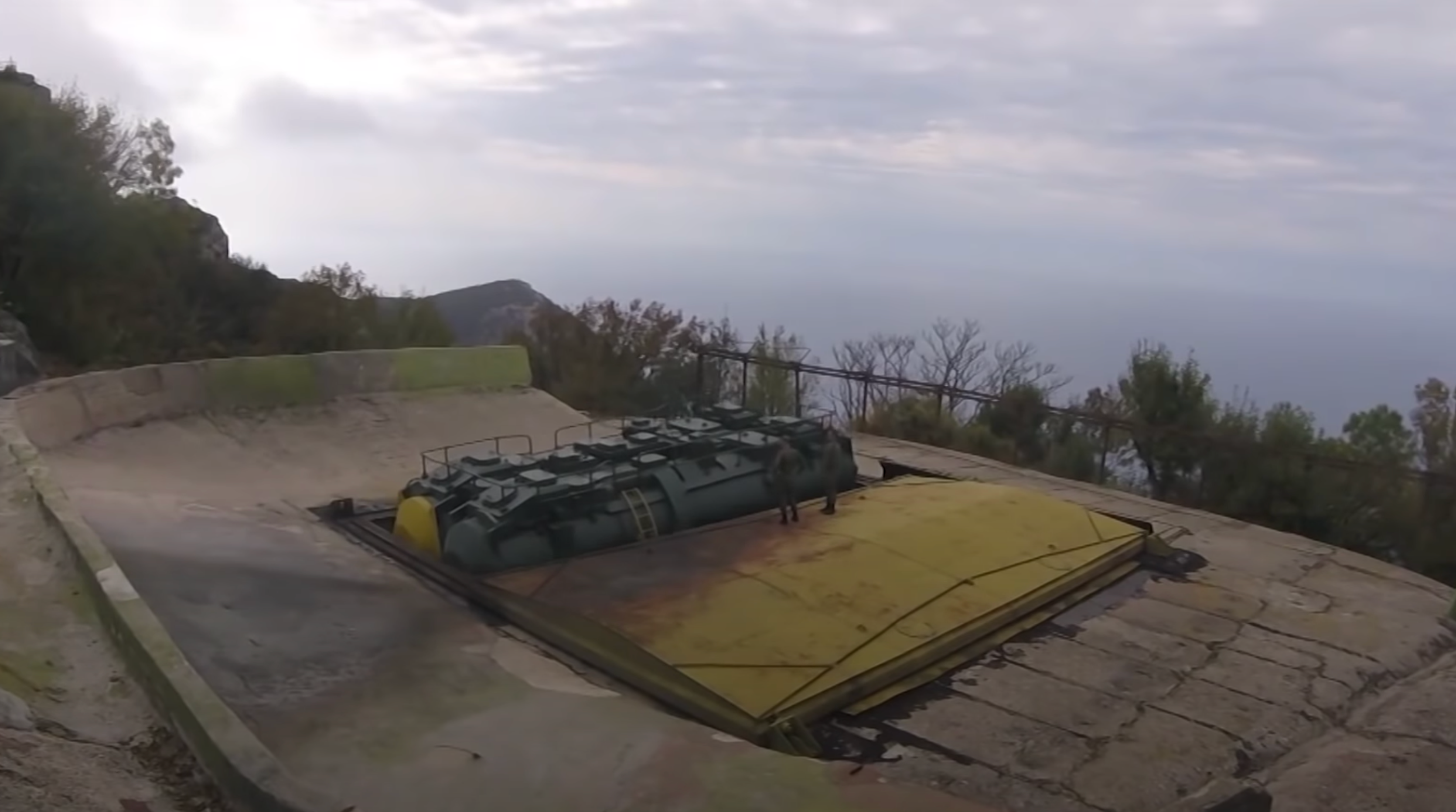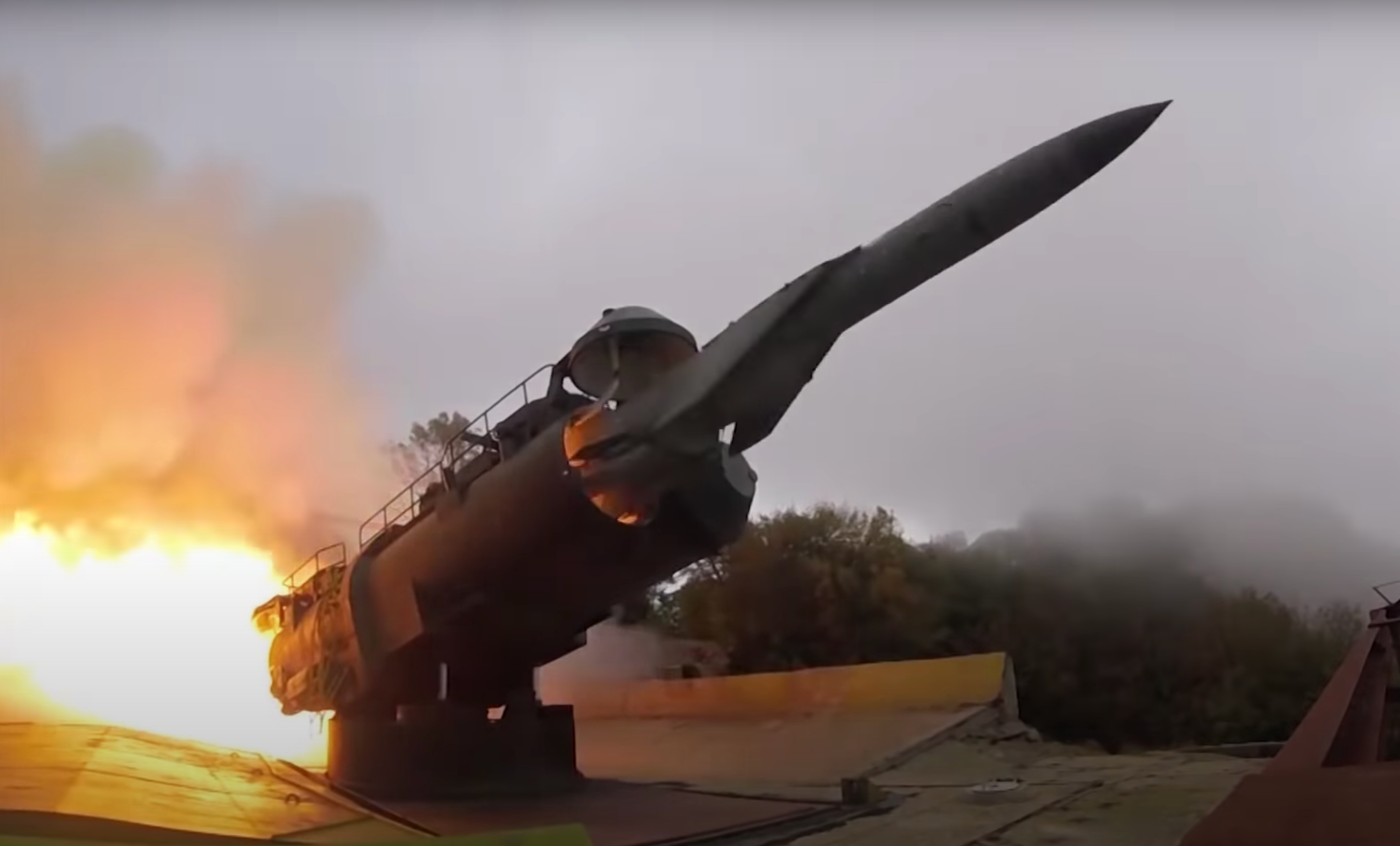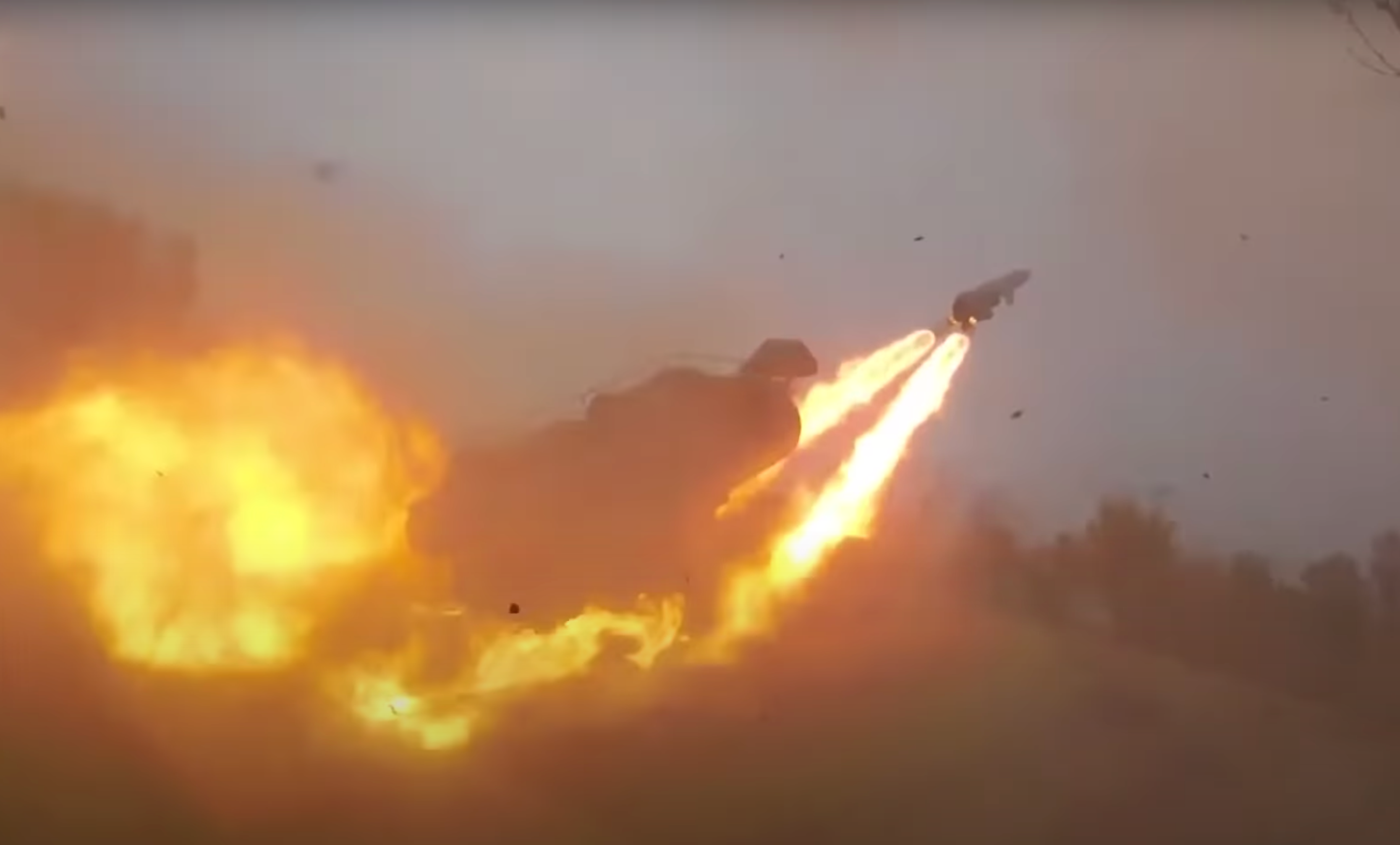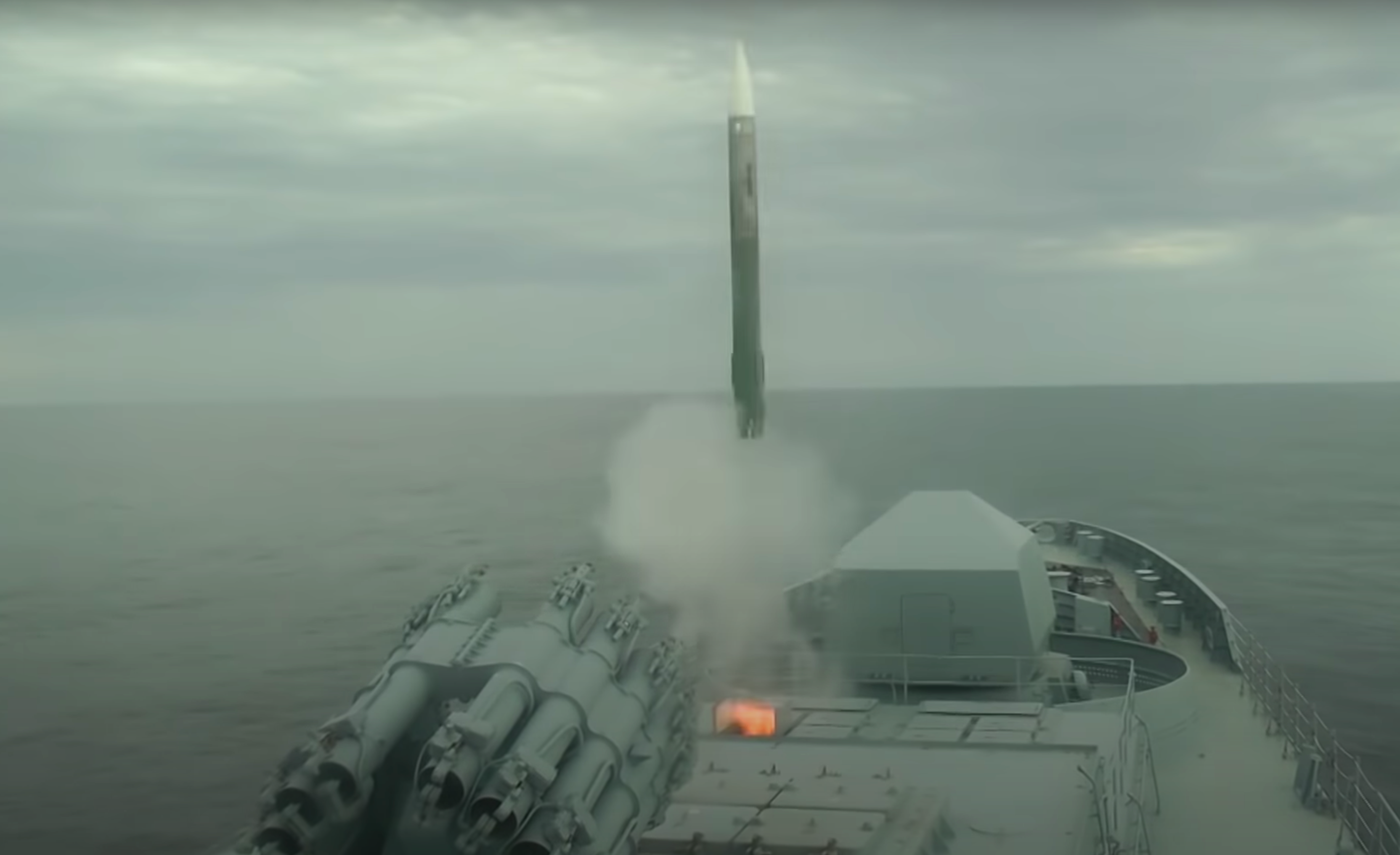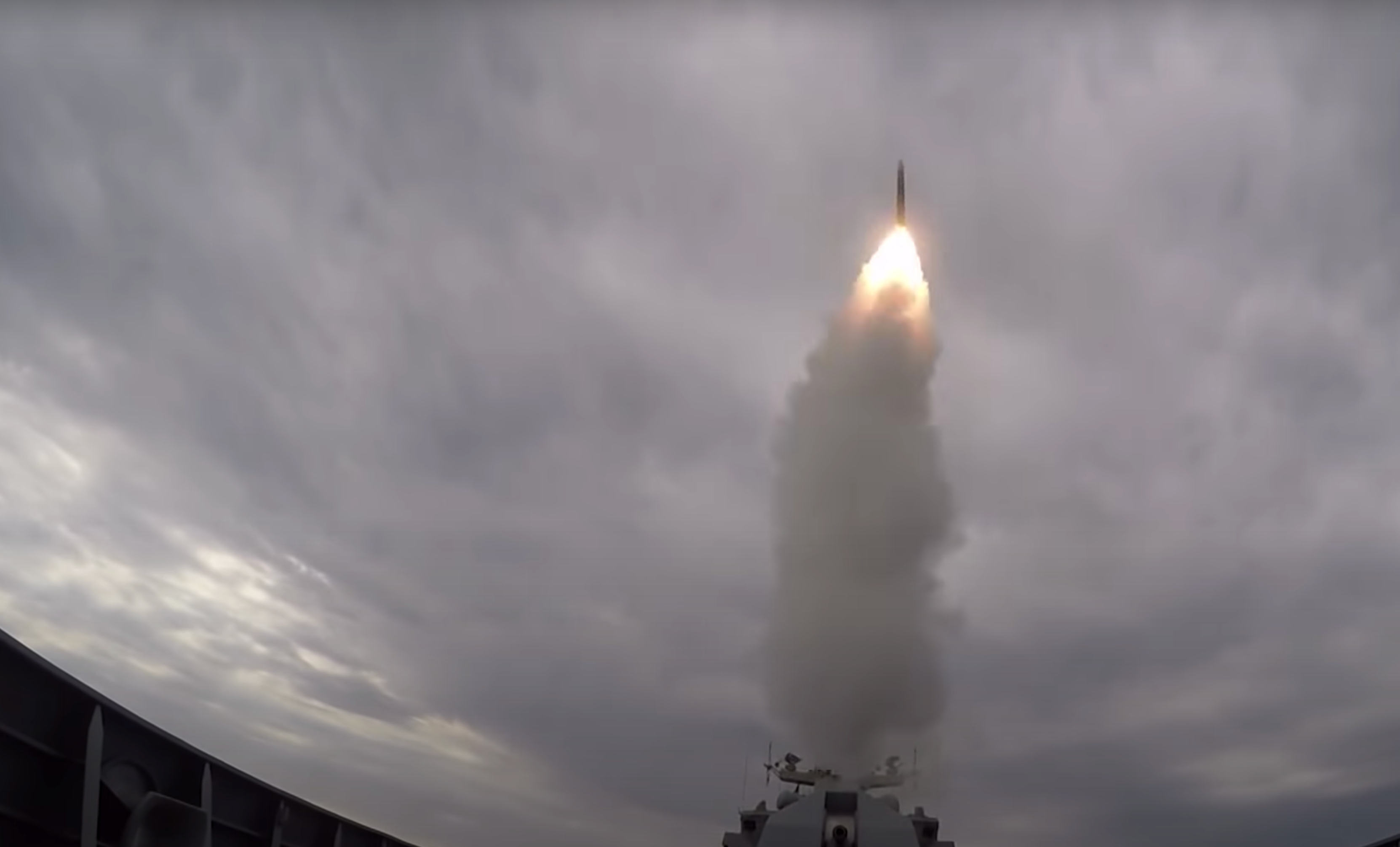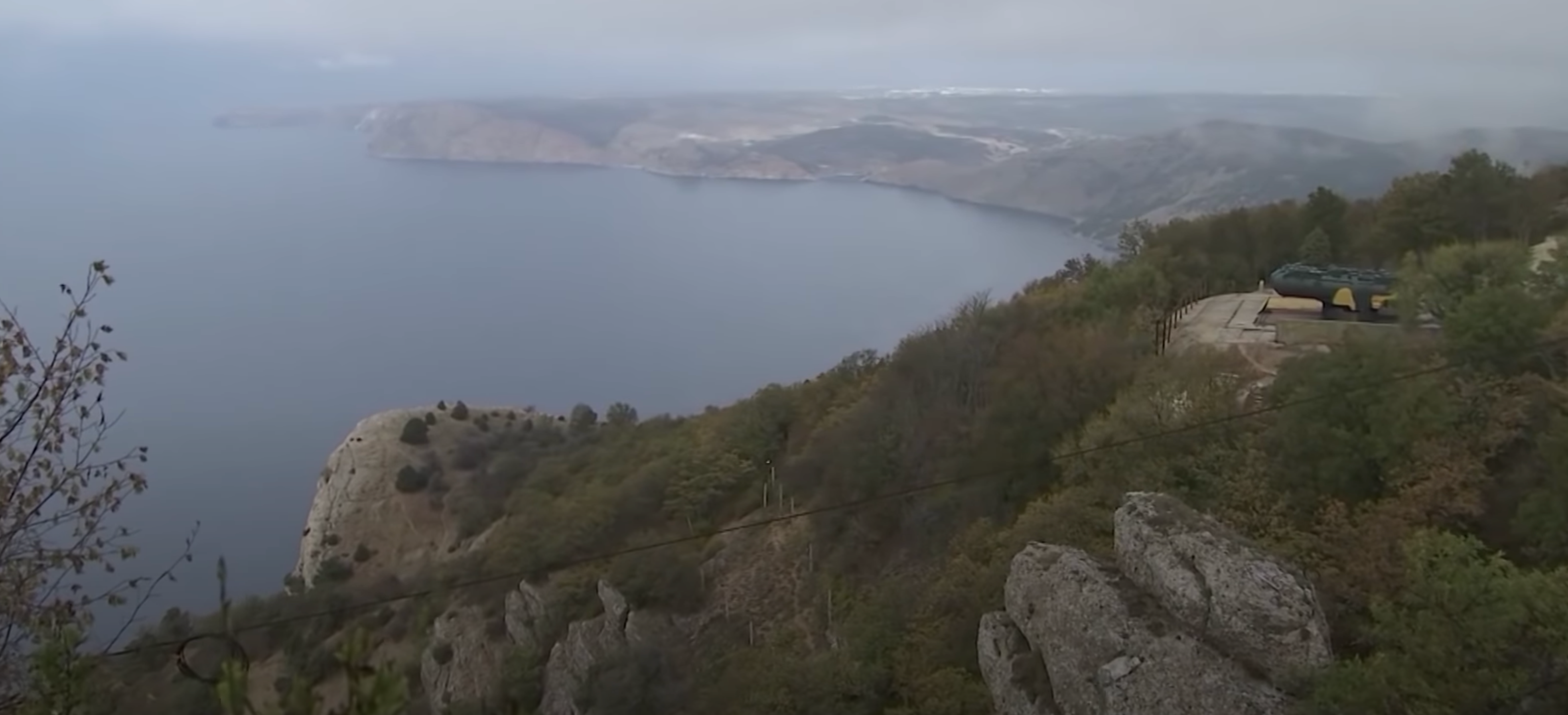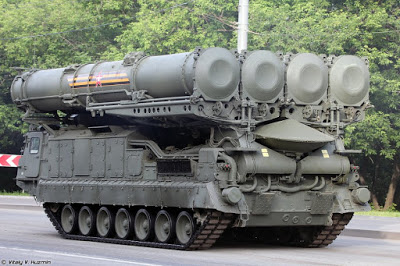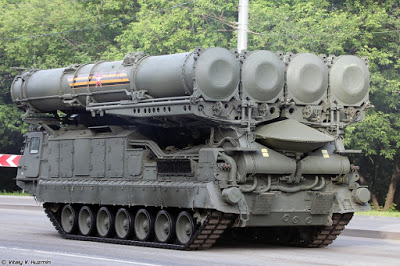In service for almost 50 years, the 3M44 Progress anti-ship missile system, and the elaborate bunker that houses it, still supports defending Crimea.
Arecently released video provides a close look at one of Russia’s lesser-known weapons, the mighty Utes coastal-defense anti-ship missile system, in action. The particular weapon is assigned to the hardened battery that protects the maritime approaches to Sevastopol, on the strategically important Crimea peninsula that was seized by Russia in 2014.
It’s unclear when the footage was recorded, but it was posted online on October 14, 2020, by
TV Zvezda, the official television channel of the Russian Ministry of Defense. The accompanying report suggests the missile-firing exercise occurred after the large-scale Kavkaz-2020 maneuvers, which also took place partly in the Black Sea, in late September.
According to a summary provided by
TV Zvezda, the video shows a joint missile firing exercise involving the Russian Navy’s frigate
Admiral Grigorovich, which is the lead ship of its class, and Sevastopol’s Utes battery.
The report explains that a 3M44 Progress anti-ship missile was launched from the Utes battery and was then successfully intercepted by the frigate’s air defense systems from a distance of more than 6.2 miles. Two video shows the Progress missile’s fiery departure from the right-side of the twin-tube launcher, which then disappears back into its bunker, protected by huge metal doors.
The Utes’ twin-launcher for the 3M44 Progress anti-ship missile in a semi-retracted position.
The missile leaps out of its launch canister, with the wings still folded.
The missile climbs out over the Black Sea as the wings deploy.
The anti-ship weapon was downed by a missile from the frigate’s Shtil air defense system, in this, its latest form, known to NATO as SA-N-7C Gollum. A 9M317M missile — an advanced, containerized version of the weapon used in the
land-based Buk mobile surface-to-air missile system — is seen being launched from the warship’s 24-cell vertical launch system (VLS) at around the 2:10-minute mark in the accompanying video. The missile launch is seen from various different perspectives, emphasizing the “cold launch” ejection from the VLS before the rocket motor engages.
A 9M317M is launched from the Russian Navy’s frigate
Admiral Grigorovich.
The 9M317M launch viewed from the bow, looking back down the warship.
To ensure safety, the maritime range in the waters off Sevastopol that hosted the live-fire exercise was closed to other maritime traffic, with more than 10 warships and auxiliary vessels from the Black Sea Fleet patrolling the area to keep out intruders.
While these drills showcase some of the latest Russian weaponry, they also reveal the continued importance of the veteran Utes and its unique relationship to the Crimea peninsula.
The story of the Utes, meaning Cliff in Russian, dates all the way back to 1954, according to this authoritative
Russian-language account. What is claimed to be the world’s first coastal underground anti-ship missile system was installed in the mountains near Balaklava, to protect Sevastopol and the Soviet Union’s southern maritime approaches.
The commanding location of the Utes site today.
The secretive site at Balaklava was codenamed Object 100 and consisted of two identical launch sites and associated underground complexes located 3.7 miles apart and armed with first-generation Sopka anti-ship cruise missiles, with a range of around 62 miles.
A former East German Sopka anti-ship cruise missile preserved at the Bundeswehrmuseum in Dresden.
Buried under thick layers of concrete to protect it from nuclear attack, the complete facilities included command posts, missile storage, and workshops for preparing and refueling the missiles, which were themselves transported on special trucks, with their wings folded.
To provide a degree of independent operation, the underground missile base was provided with diesel powerplants, filtration and ventilation units, plus stocks of fuel, water, and food.
The initial version of Object 100 was commissioned into service in July 1957 as the Soviet Navy’s first coastal missile unit.
By the early 1960s, the subsonic Sopka was showing its age and the decision was taken to replace it with the Utes system armed with a new supersonic anti-ship missile, the P-35B, which was also used in a road-mobile coastal defense system, the Redut.
A road-mobile Redut coastal defense system assigned to the Russian Pacific Fleet.
The Utes complex went online in April 1973 and also involved the installation of a new radar, identification-friend-or-foe system, as well as an updated control center, launchers, and various new ground equipment.
The liquid-fueled P-35B missiles could be prepared below ground with their wings folded, before being raised to their firing position by elevating the launchers. These would then return below ground for reloading.
In 1982, the Utes complex was modernized again with the introduction of a third-generation missile, the 3M44 Progress. This had an effective range of a reported 286 miles, compared to 168 miles for the previous P-35B. It also included the option of a 350-kiloton nuclear warhead.
In December 1991, the Soviet Union broke up into 15 new states, each of which set about organizing its own armed forces. The Soviet-era Black Sea Fleet was divided between Russia and Ukraine, with Kyiv allowing temporary stationing of the Russian Black Sea fleet in Crimea. Meanwhile, Objekt 100 was transferred to the Ukrainian Navy in 1996 and apparently fell out of use.
However, a change in fortunes came with Russia’s illegal seizure and subsequent annexation of Crimea in 2014. The Utes was rapidly returned to combat status, with a first missile launch during an exercise occurring in April 2016.
More recently, Russia’s Black Sea Fleet has begun to deploy more modern and capable coastal defense assets in the region, as well. These include the
K-300P Bastion-P mobile system, known to NATO as the SSC-5 Stooge. The missiles launched by this system reportedly have a range of 186 miles and a speed of around Mach 2.5.
Shorter-ranged, but similarly mobile, is the
3K60 Bal coastal defense missile system, which is also in use with the Black Sea Fleet. Designated SSC-6 Sennight by NATO, the Bal is a subsonic missile, broadly similar to the American Harpoon, and has a range of 75 miles. Each Bal launch vehicle can carry eight missiles, and a pair of launch vehicles can deliver a 16-missile volley against their target.
Both the Bastion-P and
Bal were used during the live-fire portion of the recent Kavkaz-2020 exercise. According to the Russian Ministry of Defense, the missile systems were employed against a simulated enemy amphibious task force approaching the Black Sea coast in the Krasnodar region, immediately east of Crimea.
Compared to the aging Utes system, the Bastion-P and Bal are harder to target, being able to launch their solid-fuel missiles rapidly before moving to another location. They are also able to receive targeting data from a wide variety of sources, including unmanned aerial vehicles, which was also practiced during Kavkaz-2020. Both these new systems have also been
deployed in Crimea.
These coastal defense systems are just one aspect of what is one of the largest concentrations of anti-ship missile capabilities in the world. Combined with their Black Sea fleet and Russian airpower counterparts, they can quickly transform nearly the whole of the confined Black Sea into a super anti-ship missile engagement zone on short notice.
While the combat efficiency of the Utes cruise missile system is questionable, it’s clear that the Russian Navy still sees value in it. Even if it is now at least partially being used for air defense training, this Cold War warrior is still playing a useful role.
In service for almost 50 years, the 3M44 Progress anti-ship missile system, and the elaborate bunker that houses it, still supports defending Crimea.

www.thedrive.com




